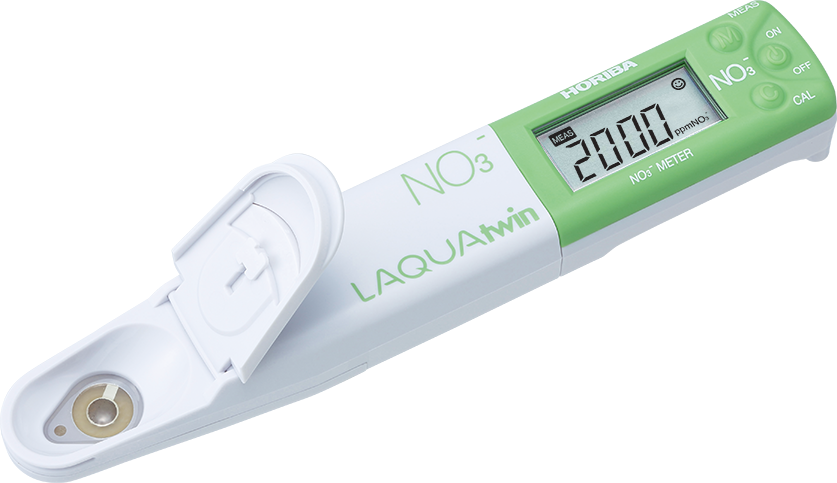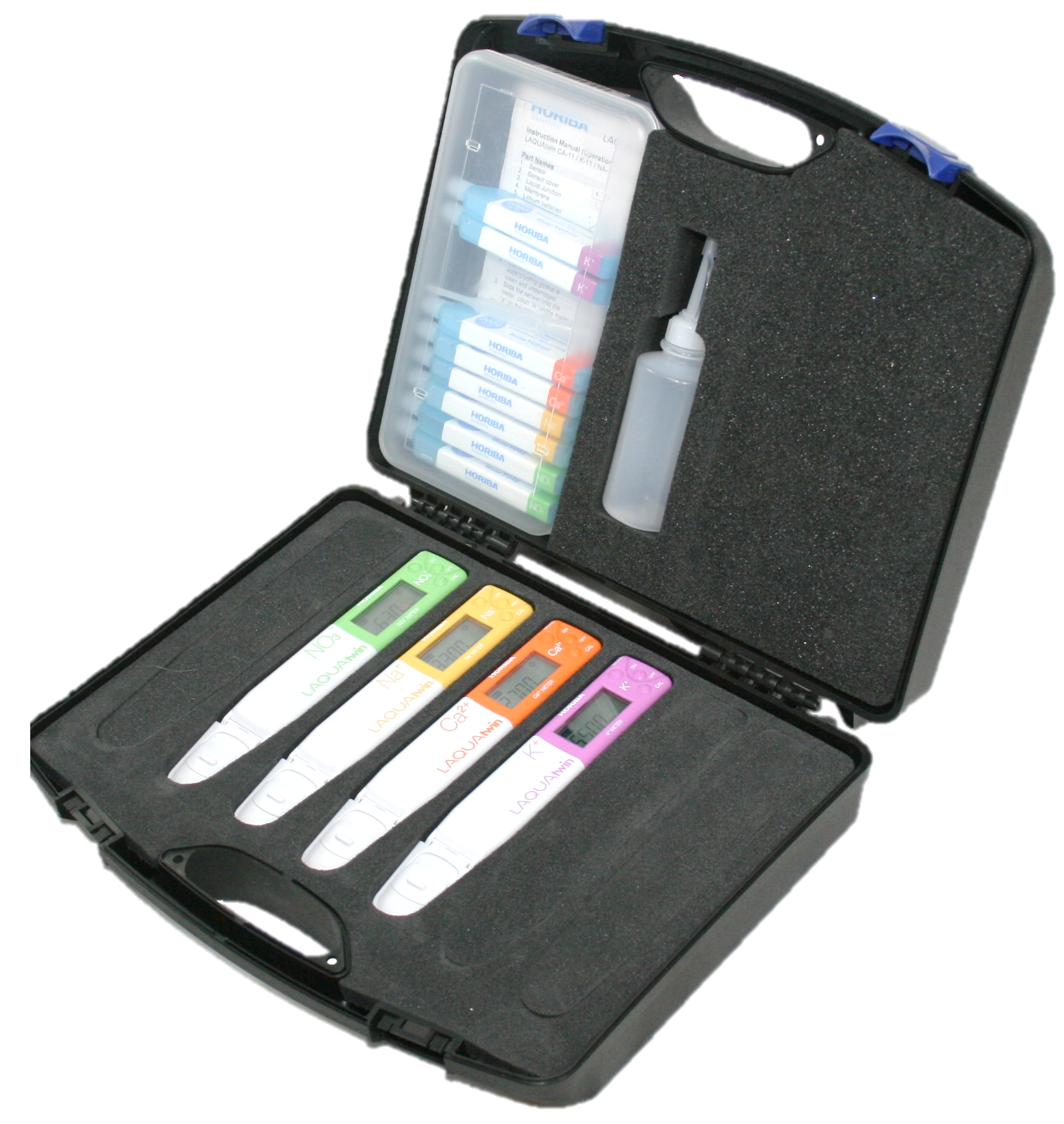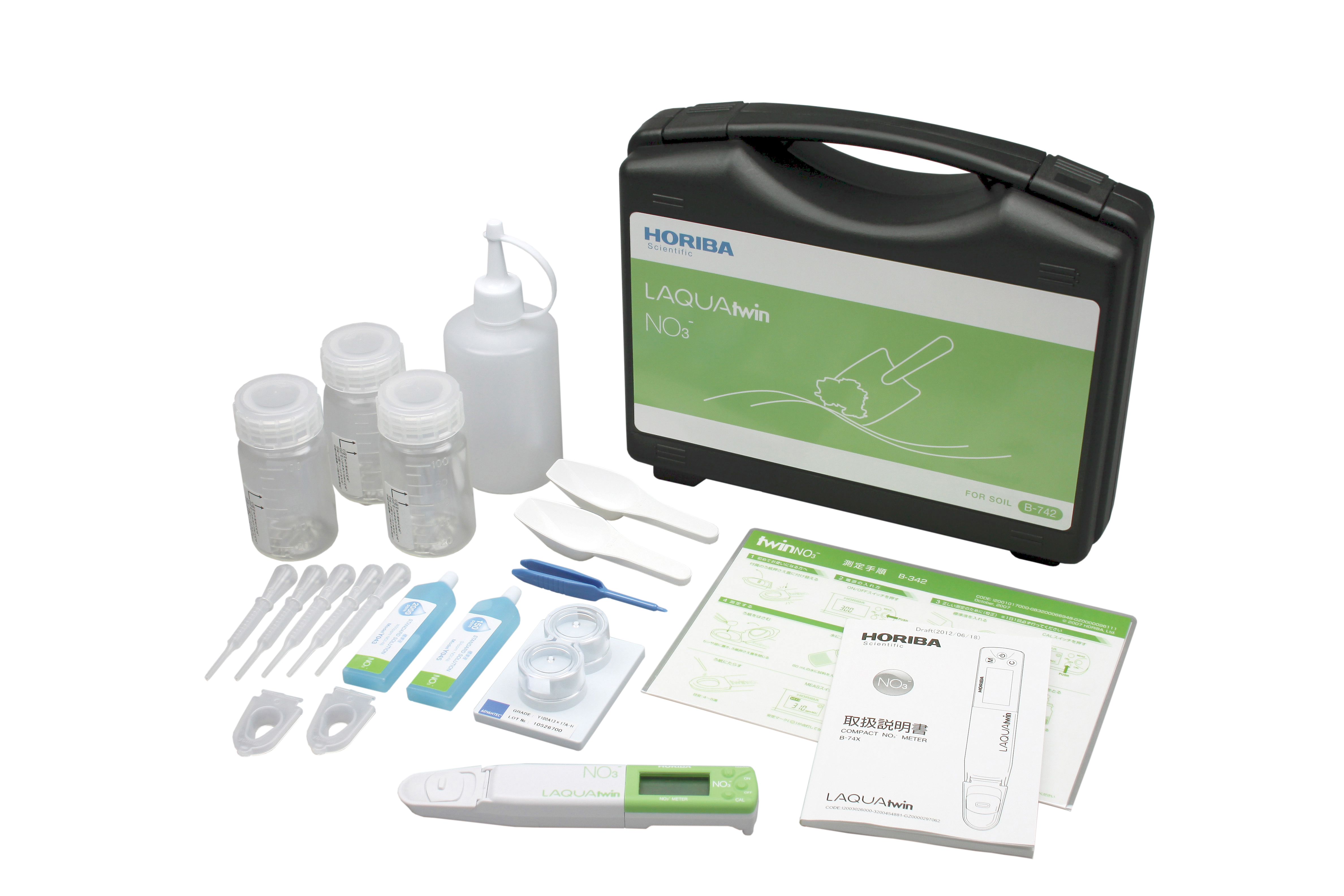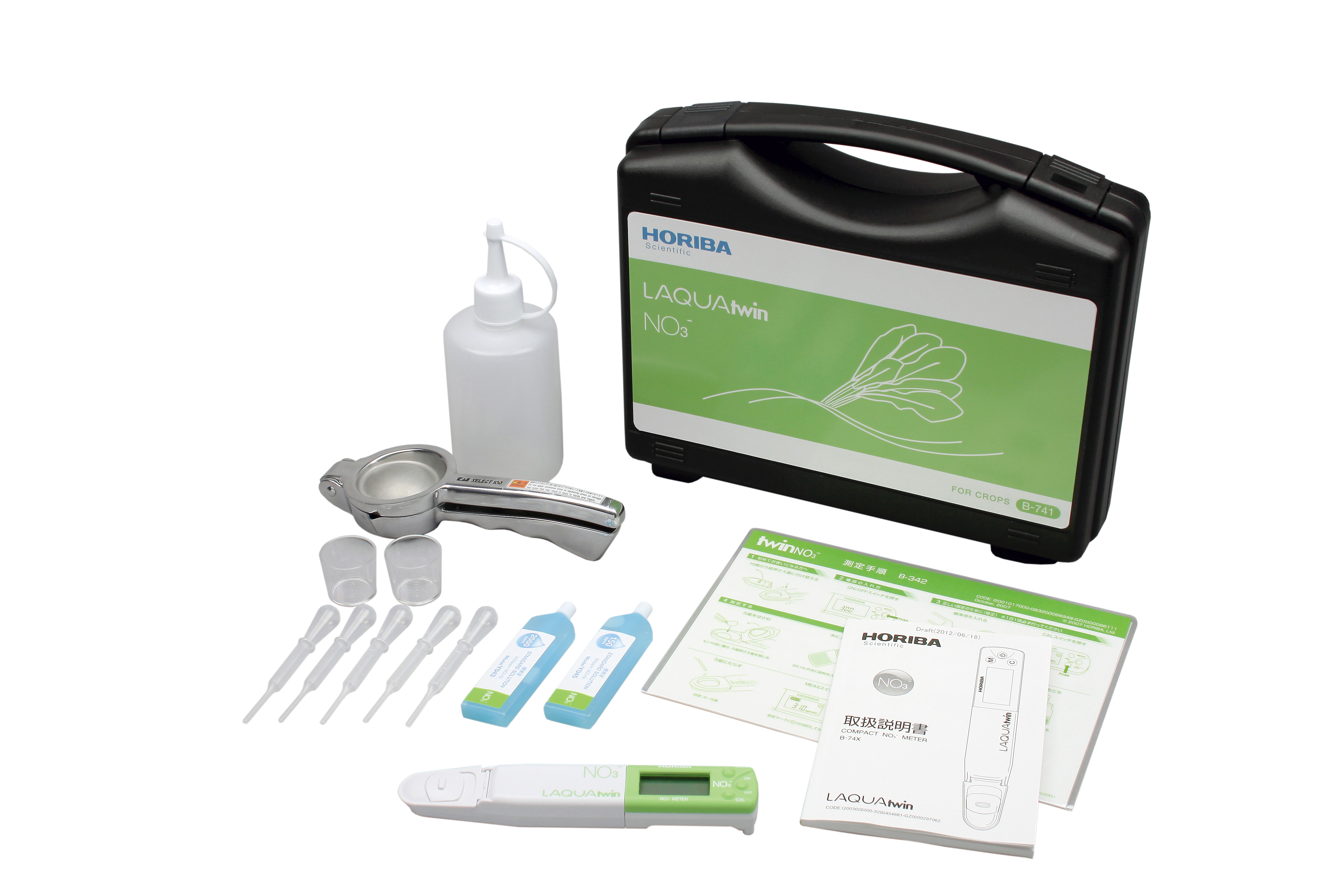Rapid In-Field Determination of Nitrogen in Onions
Fresh root sap analysis with LAQUAtwin nitrate ion meter offers cost-effective, rapid and easy solution to determine nitrogen status in onion plants. The nitrate-nitrogen (NO3-N) concentrations in onion vary at different growth stages. The acceptable root sap NO3-N concentration range for 0.5 to 1.5-inch onion bulbs is 350 to 500 ppm.


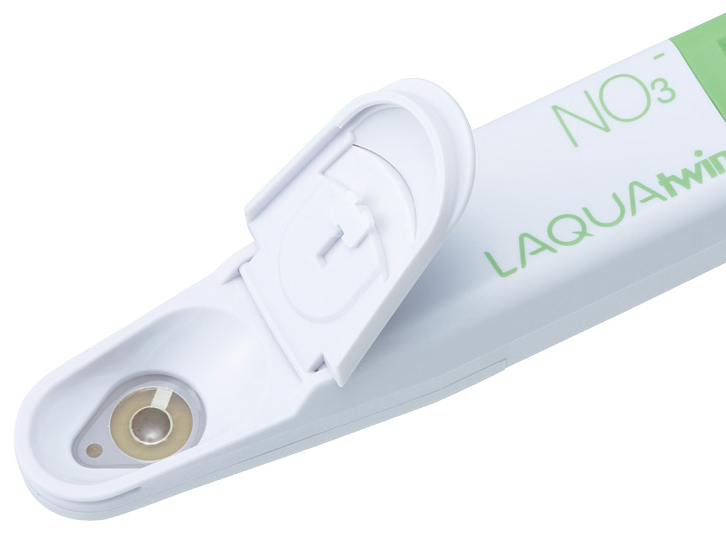
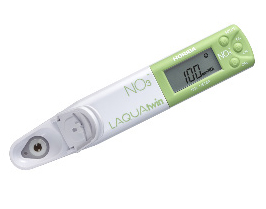
Introduction
Nitrogen is a nutrient taken up by plants in the form of ammonium and nitrate ions for their green leafy growth. When ammonium fertilizers are applied to plants, the ammonium is converted to nitrate by nitrification process. Also, organic matter broken down in soil is transformed into ammonium first and then eventually into nitrate. These circumstances result in more nitrate in soils. Thus nitrogen tests measure nitrate rather than ammonium.
Plant tissue such as leaf and petiole contain high levels of nitrate, which has been shown over many years to be a good indication of the nitrogen status of the plant. Testing laboratories analysing for nitrogen content of dry plant tissue usually require ample time for collecting, transporting, drying, grinding and analysis. They deliver results after several days. With modern technology, quick tests for determining the nitrogen content in plant tissue like handheld nitrate meters with ion selective electrode, chlorophyll meter, and nitrate test strips have been developed.
As a general rule for nitrate testing, twenty petioles of most recently fully expanded mature leaves from different plants in a field are required for a representative sample. However, with onions, roots are used to determine nitrate levels.1
The LAQUAtwin nitrate ion meter provides the easiest way to measure nitrate concentration in fresh plant sap. The sensor requires only few drops of sap, which can be quickly extracted using a garlic press. The meter analyses the sap in just few seconds and displays reading expressed as either nitrate (NO3-) or nitrate-nitrogen (NO3-N) ppm units. Results can be obtained immediately in the field with much less effort and relatively low cost. These advantages over conventional laboratory testing are useful for onion growers in determining fertilization applications.
Method
Select mg/L or ppm NO3-N in the LAQUAtwin nitrate ion meter set-up. Calibrate the meter according to manufacturer’s instructions using the 150ppm and 2000ppm nitrate standards included in the kit. The readings of
150ppm and 2000ppm nitrate standards will be calibrated as 34 ppm and 450 ppm NO3-N, respectively.
Sample Collection And Preparation
- Collect root samples from 20-30 representative onion plants in the field. Use a small spade or other lifting tool to remove the plants.
- Cut the roots from the bulbs and wash with distilled or deionized water to remove soil.
- Blot the roots dry with a paper towel and mix them thoroughly.
- Load a random sample of roots in a garlic press and squeeze the sap.
- Place drops of sap onto the flat sensor until it is fully covered. Record the reading once it is stable.
- After each use, rinse the sensor with distilled or deionized water and blot dry with soft tissue.
- Repeat the procedure two or three times with the remaining sample if possible. Calculate the average of the readings of the samples.
It is best not to take readings in areas of direct sunlight or high temperatures. Collect samples and bring them indoor for analysis. Allow the samples and standards to reach same temperature before proceeding with the analysis.
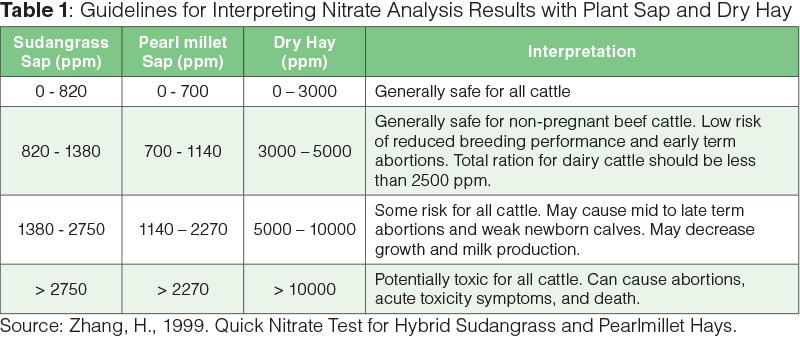
Results and Benefits
Onion roots display the greatest response to available nitrogen supply of any plant part.2 They are used in analysis because of the stable nitrate concentrations in the root xylem. The LAQUAtwin nitrate ion meter has been successfully used in determining nitrate-nitrogen (NO3-N) in onions and readings have been found correlated with lab results.3
When sampling, it is important to note the onion growth stage so you can determine the correct sufficiency guideline to apply with your analysis results. Sufficiency guidelines are generally expressed as nitrate-nitrogen (NO3-N) values. The NO3-N refers to the nitrogen portion of the nitrate molecule. The table below provides the general guidelines for acceptable root sap nitrate concentrations at various stages of onion plant growth.4 Notice that the nitrate concentrations decline as the plant matures. For 0.5 to 1.5-inch onion bulbs, the acceptable root sap NO3-N concentration range is 350 to 500 ppm.1 You may use the table in interpreting the LAQUAtwin nitrate ion meter results. Record the initial analysis results and use them to compare future results.
References and Suggested Readings
- Hartz, T., Jackson L., Schulbach, K., and Smith, R. Guide to Nitrogen Quick-Tests for Vegetables with the Cardy Nitrate Meter. Retrieved from https://www.cdfa.ca.gov/is/docs/Schulbach95.pdf
- Sullivan, D.M., Shock, C.C., Horneck, D.A., Stevens, R.G., Pelter, G.Q. and Feibert, E.B.G. (2001). Nutrient Management for Onions in the Pacific Northwest. PNW 546. Retrieved from https://catalog.extension.oregonstate.edu/sites/catalog/files/project/pdf/pnw546.pdf
- McDonald, M.R., McKeown, A.W., Scott-Dupree, C.D., and Westerveld, S.M. Assessment of Chlorophyll and Nitrate Meters as Nitrogen Tests for Cabbage, Onions, and Carrots. HorTechnology, April-June 2004, pp 179-188. Retrieved from http://horttech.ashspublications.org/content/14/2/179.full.pdf+html
- Petiole Sap Nitrate Guidelines. Michigan State University Extension. Retrieved from http://msue.anr.msu.edu/news/petiole_sap_nitrate_guidelines
- Bevacqua, R. and Cardenas, T. (2002). Nitrogen Monitoring Techniques for Vegetable Crops. Circular 579. College of Agriculture and Home Economics New Mexico State University. Retrieved from http://aces.nmsu.edu/pubs/_circulars/CR579.pdf
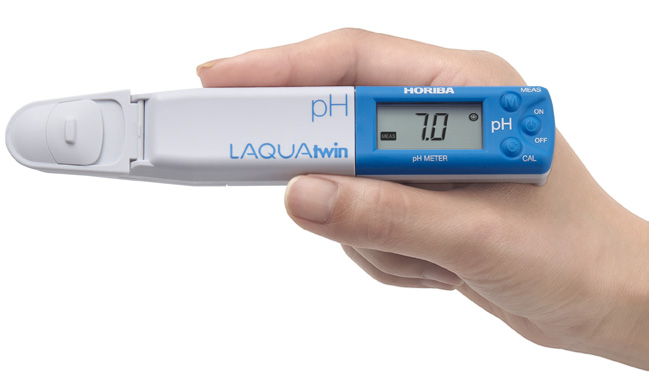
LAQUAtwin: the only meters with flat sensor technology.
HORIBA’s highly-sensitive, flat sensor technology opens up new possibilities for sampling and sample types. Only a small amount of sample is required, so you can easily sample in situ without the need for beakers or other labware. Sensors are easily replaced as required.
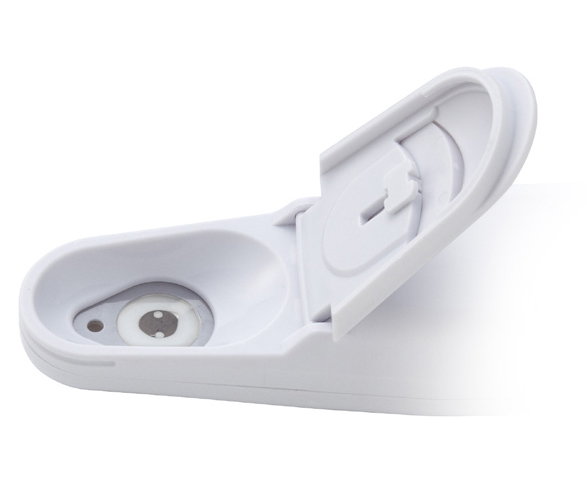
Calibrate and measure at the touch of a button — the smiley face will tell you when the result can be read.
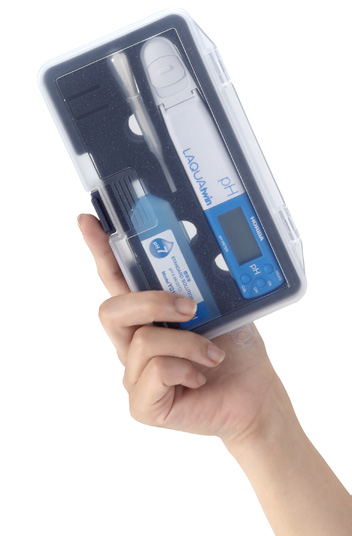
LAQUAtwin is fully waterproof and dustproof.
The meter and sensor are fully waterproof* and dustproof, so you can take it anywhere.
* IP67 rated. Will withstand immersion for 30 minutes at 1 m. Not suitable for underwater use.
Carry case comes as standard for handy portability.
The compact carry case contains everything you need for your measurements, including the standard solution and sampling sheets.

